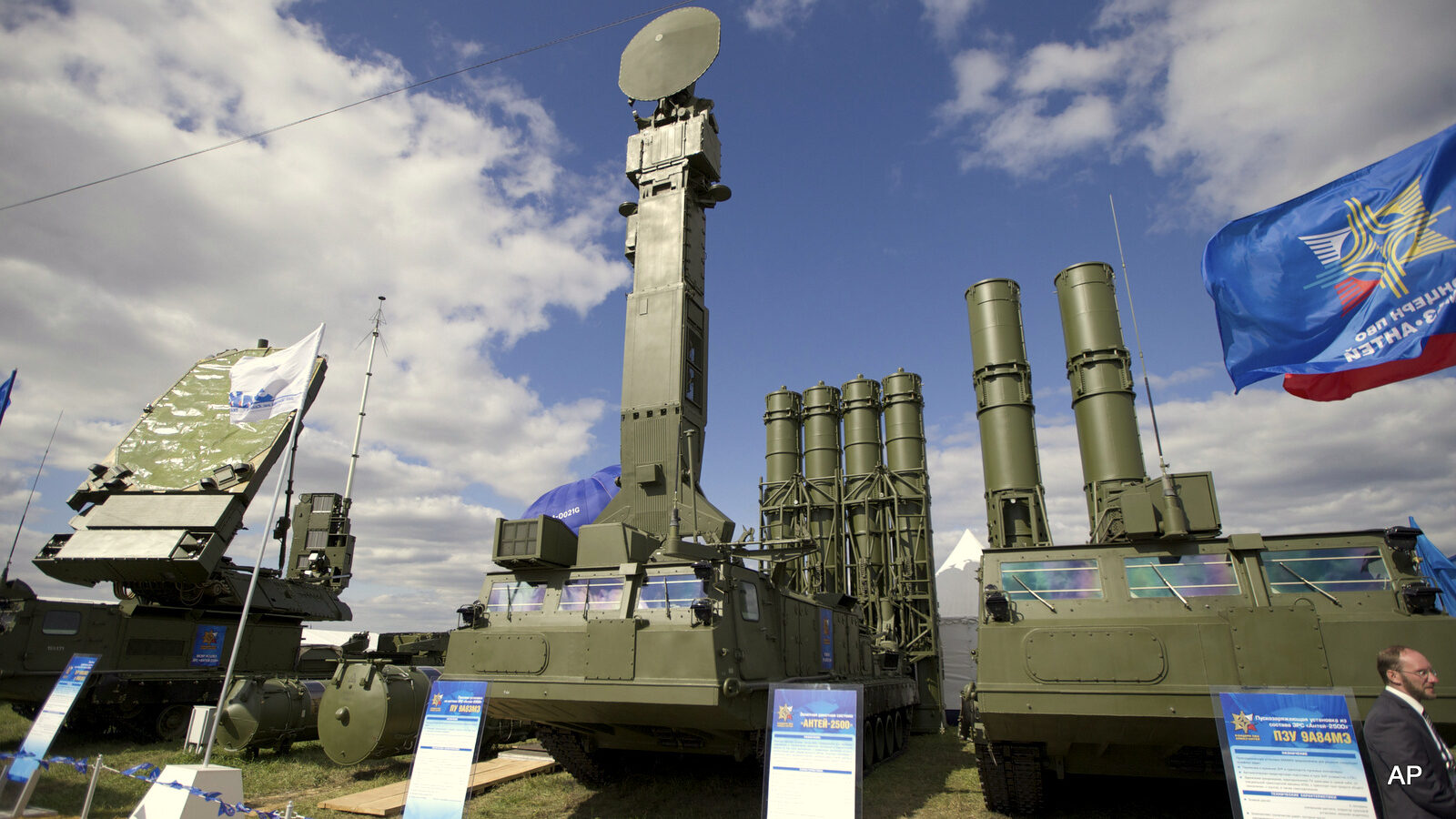Russia has formally announced that delivery of its feared S-300 surface-to-air missile system to the Syrian government is now complete. “The work was finished a day ago,” Defense Minister Sergei Shoigu told President Vladimir Putin during a televised meeting on Rossiya 24 TV on Tuesday, and noted that hardware supplied to Syria consists of 49 pieces of military equipment, including radars, control vehicles and four launchers.
The declaration comes after Russia’s Foreign Minister confirmed that transfer was in progress last Saturday, and that the move will “be devoted to ensure 100 percent safety and security of our men in Syria, and we will do this.” Moscow has followed through on its prior vow to move “swiftly and appropriately” in response to Israel’s massive September 17 airstrikes on Syria which resulted in the accidental downing of a Russian reconnaissance plane with 15 people on board by Syrian defenses.
Last Monday the Defense Minister indicated delivery would happen “within two weeks” — thus it appears Russia began prepping the transfer immediately. Russian advisers will now train Syrian personnel to operation the new weapons, which is expected to take up to a few months, with the likelihood that Russians will man the active systems in the meantime.
Middle East based journalist Danny Makki noted that “it will take 3 months for Russians to train Syrian teams on S300 air defense system,” and that it’s “fair to assume that for that period the Russians will be operating the S300.” Russian media reports say the system is expected to be fully operational by October 20.
Israel had expressed regret over the incident but ultimately blamed Syrian and Iran for the mishap in a series of IDF statements. PM Netanyahu had dispatched a high level delegation to Moscow immediately after the incident to mend relations, but apparently to no avail. Up until this week it was unclear whether Putin would actually go through with delivery of the advanced S-300 system — a huge upgrade to Syria’s current ailing Soviet-era defenses — which both Israel and the United States have called a “provocation” and “significant escalation” (in Bolton’s words), and urged Russia not to got through with it.
Last week, an Israeli official said called the S-300 system in Assad’s hands “a complicated challenge” for Israel, and added, “We’re dealing with it in different ways, not necessarily by preventing the delivery,” in a clear compromise compared to prior statements of Netanyahu who had called S-300 delivery a “red line” in tandem with calling out Iran’s troop presence in Syria, for which Israel must act militarily.
But now clearly Putin is in the driver’s seat and showed himself unmoved by Israeli threats to continue to act in Syrian territory even after the S-300 gets installed. President Trump also recently stated that the US “fully supports” Israel’s actions.
The chief worrisome game changer for Netanyahu is that — as a Haaretz report noted previously — the range of the new defense system will give Damascus the ability to detect potentially hostile aircraft from point of origin inside Israel: “With Putin’s S-300, Assad’s army could even ‘lock-on’ IAF aircraft as they take off from bases within Israel.” And as one Israeli defense analyst put it, “Israel should be worried.”
Russia has further notified the world that it would help Syria blanket the coast and its sovereign territory with an “electronic umbrella” of new electronic countermeasures, which will allow the Syrians to “suppress satellite navigation, onboard radar systems and communications of warplanes attacking targets on Syrian territory.”
And Syria for its part has signaled to the Israelis that it’s essentially gameover. Syria’s Deputy Foreign Minister Faisal Mekdad recently said that “Israel, which has gotten used to carrying out attacks under various pretexts, will now have to weigh and rethink before attacking again.” He told the Chinese news agency Xinhua: “The aggression against Syria is directed towards the forces that are fighting against terrorism in Syria. If Israel will try to attack we will defend our people as we did in the past.”
The Israeli Defense Forces (IDF) over the summer confirmed that it had struck targets inside Syria over 200 times within just the last year alone. But it now appears those days are over.
Top Photo | FILE – In this file photo taken on Tuesday, Aug. 27, 2013 a Russian air defense missile system Antey 2500, or S-300 VM, is on display at the opening of the MAKS Air Show in Zhukovsky outside Moscow. (AP Photo/Ivan Sekretarev, File)



